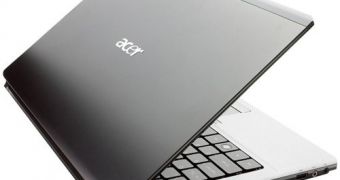Notebook vendors seem eager to get touch support onto notebooks as a standard feature, such as it is, but this isn't exactly something as easy as it sounds, especially for the people actually tasked with making the screens in question.
By now, the fact that ultrabooks will, or are hoped, to start a new age for mobile personal computers is obvious.
One consequence they may cause as a result of their imposed quest to challenge tablets (regardless of what ASUS says) is leading to touch support becoming mainstream.
Right now, notebooks don't really bother much with touchscreens, since they have their keyboards, their touchpads and, usually, a nice, small mouse on the side.
Still, vendors want full-fledged touch support on at least ultra-thin notebook models, or so it is reported.
Unfortunately, this is still something of a difficult dream to accomplish, since there isn't an easy way to reconcile touch technology with the ultra-thin form factor.
While LCDs do have the ability to turn out thin enough to suit the needs of PC suppliers, adding a touch panel on top of that will cause a visible thickening of the display.
At the moment, LCDs for ultra-thins are 5.5 to 5.6 mm (0.21 to 0.22 inches) in thickness, but IC controllers and flexible flat cables have to be added if touch is to be supported.
As such, even if Acer, Dell, Apple, ASUS, HP, etc. want super-thin, touch-enabled laptops, they will have to wait until the technology exists or just drop the idea altogether, at least for now.
Fortunately, the consumer base has not actually advanced into the so-called touchscreen age yet, which means that the majority are still very much used to the keyboard-touchpad-(optional) mouse combo.
No word yet on how long it might take for the technological troubles to be overcome.

 14 DAY TRIAL //
14 DAY TRIAL //